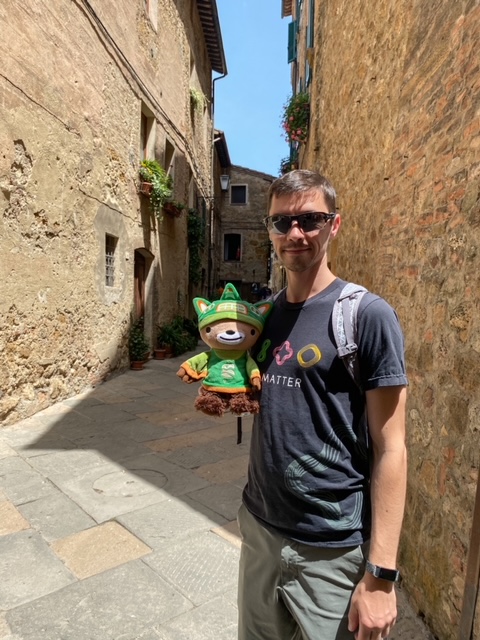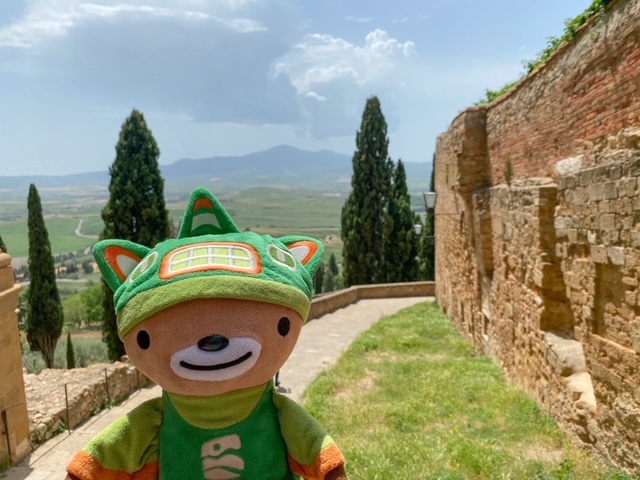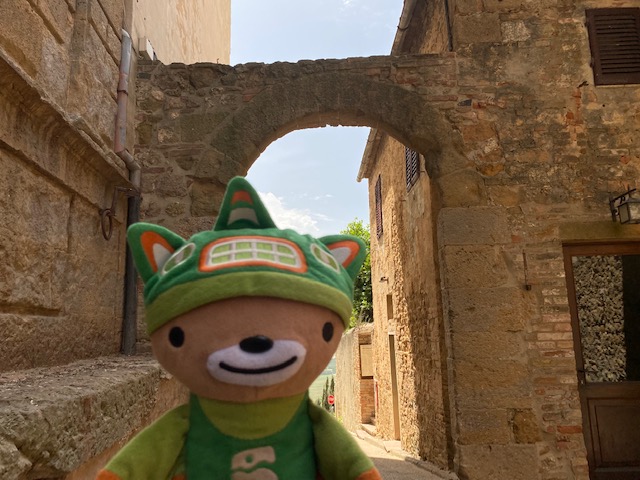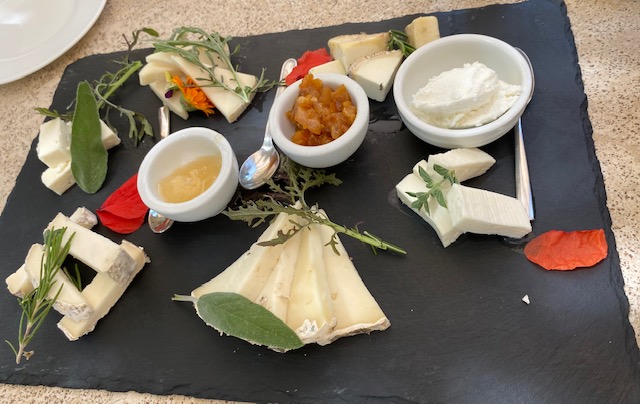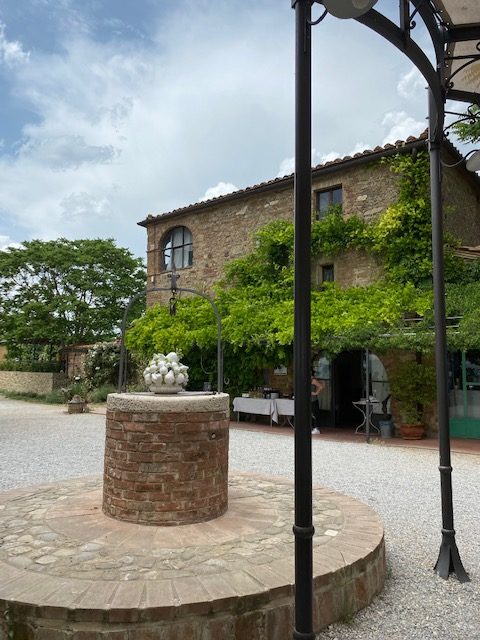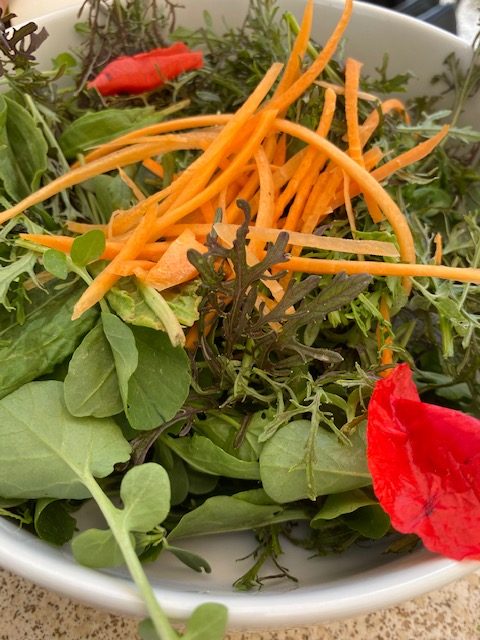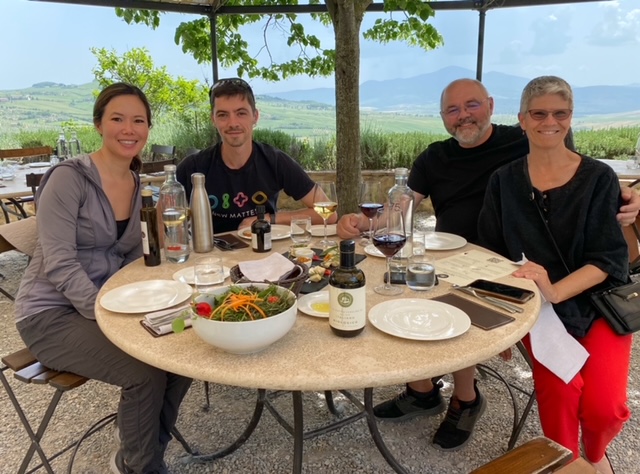Tuscany day! Of course Pokin booked us another full day tour, so I was forced up at 7am along with everyone else for breakfast and to get on the road.
Turns out our car was stored halfway across the city, so they needed time to fetch the car for us. I could have slept more had I known this! Someone failed at planning.
Some time that felt like 30 minutes later, the car pulled up in front of the hotel, and it was time to navigate out of Firenze. A little less stressful out than getting in. The bollards were down, so a few left turns and we were out of town (though it still gave us a scare to see the poliza with their lights on behind us.)
I was excited about Tuscany. I enjoyed my France trip to Provence 10 years ago and it felt like Tuscany would be similar.
We were staying in a place called Villa Cicolina, and after a couple of hours on to the autostrada, we pulled up.
And we were all promptly glad we got the full deal on car insurance. The place was very lush, but they also left branches draped over the driveway. In fact, the bushes were so dense we weren’t sure at first if we had gone up the right street, and Nicholas had to very grumpily back down the driveway while the car proximity sensors beeped madly at us because the bushes were so close.
Eventually we arrived at the right front entrance, to the surprise of the owners.
“You’re here very early,” she remarked.
I agree, I thought. No one should be forced to travel this early.
“Oh it’s because we have a tour booked,” answered Pokin.
Our rooms weren’t ready, but we were able to leave our bags while I scouted the property. Definitely reminds me of our trip to France. Lots of flowers. Looks good.

Nicholas parked the car in the parking lot down the street away from the bushy roads. I made sure to greet him on his return. He looked a bit grumpy.
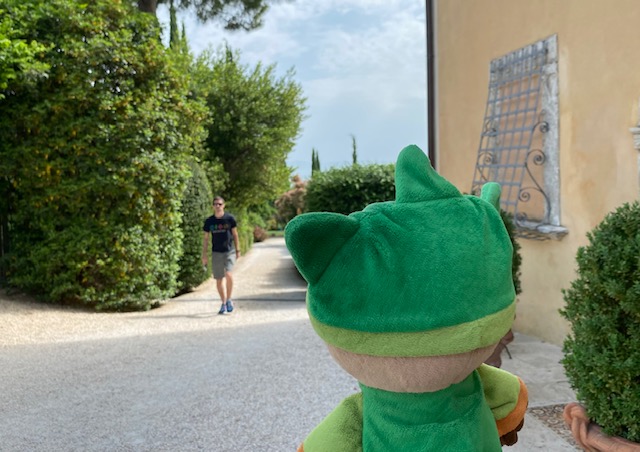
Then it was time for our tour. Pokin booked a tour with a guide named Chiara from Montalchino Wine Tours. The itinerary was an olive oil tasting, a visit to a dairy farm, and a wine tasting. I wasn’t interested in any of those so I mostly planned to nap in the bag at first.
The olive oil place they stopped at was named Frantoio Fregoli. It was definitely not olive oil season so most of the machinery was disassembled, but the owner Francesco came by to give us an explanation of everything. He also showed us how the machinery worked. That got my curiousity piqued. I got out to take a look.


We learned that the highest quality olives are harvested around October when they are still green, and at time, only 10% yield is possible. But olive oil harvested then has the highest percentage of polyphenols. If you harvest closer to December, you can have a higher oil percentage but there is major flavour and polyphenols loss. Temperature too, affects the percentage and the ideal temperatures are between 10oC-27oC. Francesco walked us through their machinery designed to cool the production so that the temperatures never exceed 27oC.
We also learned that good quality olive oil starts to lose its number of polyphenols once opened. Try to use up your olive oil within weeks! Organic olive oil at the property had close to 800 polyphenols, whereas their regular olive oil had around 400. Every year, olive oil loses around 100 polyphenols. Finicky stuff!
Francesco demonstrated how to do a proper olive oil tasting (you want to draw air in through your teeth), and we learned that Tuscan Olive oil has a peppery bitter taste. We tried to buy some olive oil (still waiting to pay), and then we were on our way.

